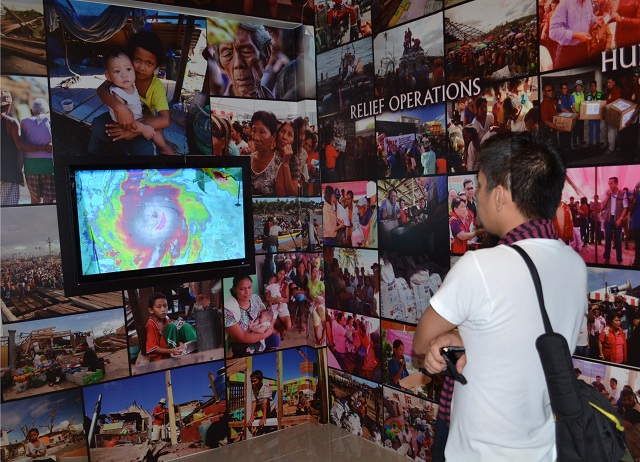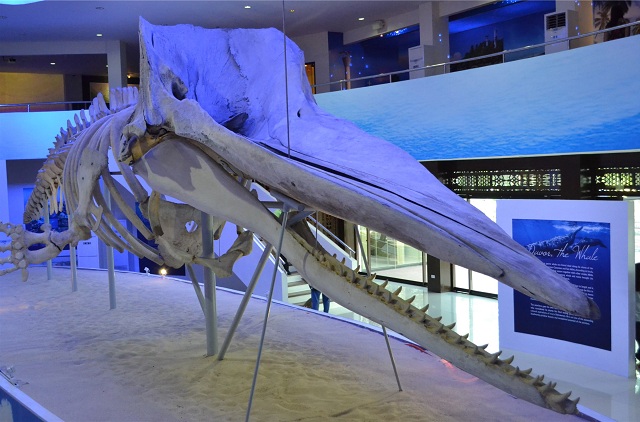Filtered By: Lifestyle
Lifestyle
Subangan: Davao Oriental’s pride on display
Text and photos by HENRYLITO D. TACIO

“It allows one to experience the breathtaking beauty of [Davao Oriental's] natural wonders – the glorious cascading waters of the Aliwagwag falls, the amazing pygmy forest and biodiversity sanctuary of Mount Hamiguitan Range, varied crystal waterfalls, pristine white sand beaches, verdant green islands, mysterious caves and tranquil rivers and lakes,” Governor Corazon Malanyaon was quoted as saying during the museum's launch in January.
According to museum administrator Lyrna June Padohinog, the name "Subangan" is derived from the Bisayan "subang," which means east. "But it could also mean 'sunrise,'" she added.
“If you can recall,” she said, “the site of the first sunlight of the New Millennium happened in Pusan Point, which is part of the province. Thus it is a fitting tribute to name this museum Subang.”
Subangan was designed by architect Edmundo Viacrucis has a floor area of 1,000 square meters on two levels.
Department of Tourism Assistant Secretary Arturo Boncato, Jr. called Subangan Museum a welcome development in the effort to improve tourism in Mindanao, which has almost a hundred museums now. But only very few are government owned; the rest are mostly privately-owned or housed in schools and universities.
Subangan’s main attraction is the fossilized remains of a 50-foot long sperm whale, believed to be the largest in the Philippines and the seventh largest in the world. Named Davor (for Davao Oriental), it beached in the town of Governor Generoso in 2011.

Davor is just one of the museum’s “globally significant features.” Another is the exhibit about the Mount Hamiguitan Range and Wildlife Sanctuary, which has been validated by the International Union for Conservation of Nature (IUCN) as a biodiversity park for UNESCO's World Heritage Inscription. The protected forest area is noted for its unique bonsai field—a "pygmy forest" of 100-year-old trees growing in ultramafic soil.
Then, there’s the Typhoon Pablo Memorial, in commemoration of the deadly storm that hit MIndanao in 2012. Displayed are photos and a documentary film that depict the devastation and loss caused by Pablo, the resilience and strength of the region's residents, and what the government is doing to “rise once again.”
The museum is divided into different sections. Both Davor and Mount Hamiguitan are included in the Natural Heritage Section. Also in this section are featured the province’s tourist destinations such as Dahical Beach in Mati, the Aliwagwag Falls in Cateel, and the 17th Century Caraga Church.
The Cultural Heritage Section is devoted to the province’s cultural legacy and featuring the prominent tribal groups, particularly Mandaya and Kaagan/Kalagan. The Mandaya village is located in barangay Pichon, about 65 kilometers from the poblacion of Caraga.
At the Historical Heritage Section, visitors can see themed exhibits of Davao Oriental’s history and people. For trivia fanatics: About 300 years ago, the province was merely a part of Caraga province, forming part of the Encomienda de Bislig with the Encomienda de Seargao, Butuan, and Tandag.
The Trade and Industry and Governance Section features the industrial activities of the province highlighting investment opportunities.
Outside of the museum are gardens, a café and a souvenir shop.
Davao Oriental has been declared by President Benigno Aquino III as a Tourism Development Area as it could hold a major role in boosting the region's tourism industry, according to Boncato.
"Our vision of tourism in Davao Oriental is to become a third generation tourist destination. It means that we have no room for the sins and mistakes of the past in developing tourism, thus will be a picture of perfect tourism in this country,” he said. — BM, GMA News
Subangan is located in the Provincial Tourism Complex in Brgy. Datu Martin Marundan, Mati City, Davao Oriental.
More Videos
Most Popular




